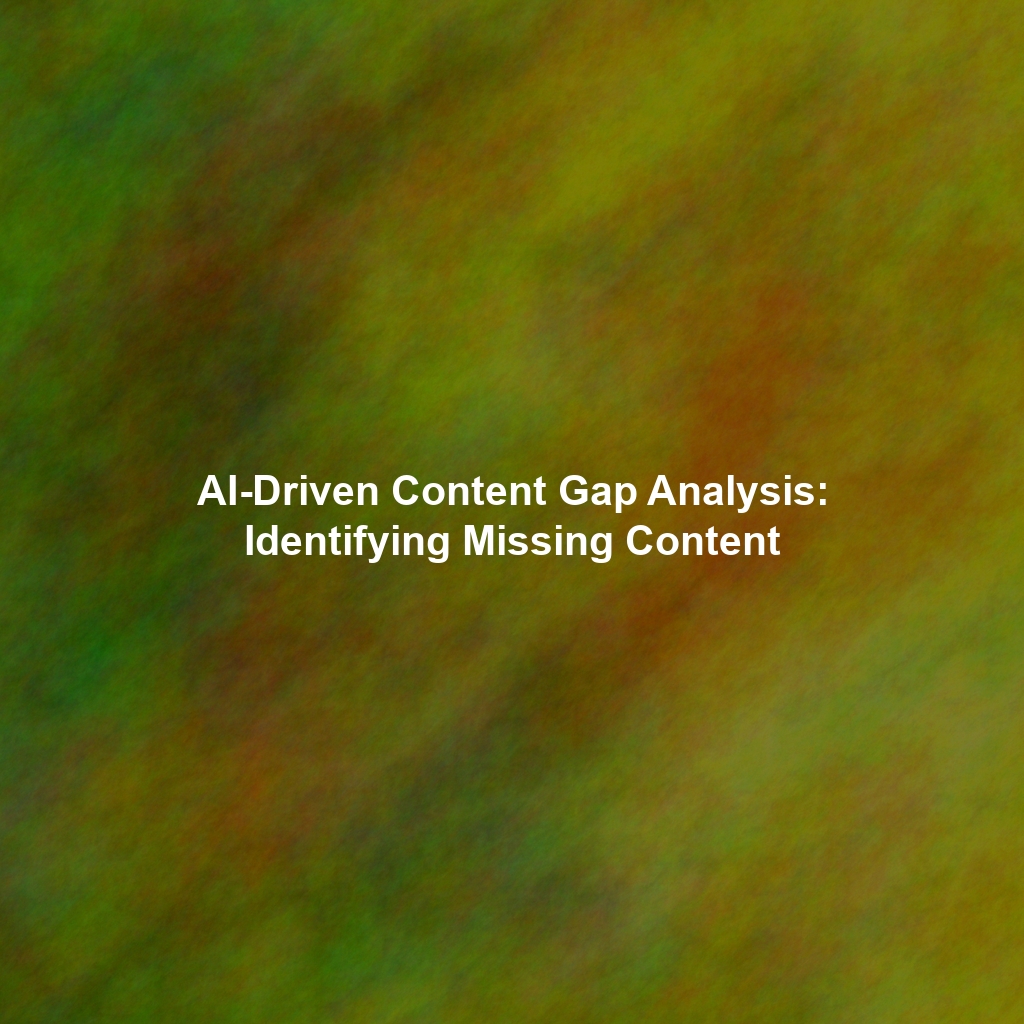Customer Segmentation: Identify and Target High-Value Audiences
Imagine trying to sell snow shovels in Miami. Or bikinis in Alaska during December. Sounds like a recipe for marketing disaster, right? That’s where customer segmentation comes in. It’s a vital piece of the marketing analytics puzzle, enabling you to move beyond broad generalizations and connect with specific groups of customers in a way that resonates with their needs, desires, and motivations.
What is Customer Segmentation?
Customer segmentation is the process of dividing your customer base into distinct groups based on shared characteristics. These characteristics can range from basic demographics to complex behavioral patterns. Instead of treating all customers the same, you can tailor your marketing efforts to each segment, increasing the likelihood of engagement and conversion. Think of it as moving from a generic loudspeaker blast to a personalized, whispered message directly into the ear of someone genuinely interested in what you have to say.
At its core, customer segmentation is about understanding who your customers are, what they want, and how they behave. By identifying these patterns, you can create more effective marketing campaigns, develop more relevant products and services, and ultimately boost your bottom line.
Why is Customer Segmentation Important?
In today’s competitive landscape, generic marketing simply doesn’t cut it. Consumers are bombarded with advertising messages every day. To break through the noise, you need to be relevant, personalized, and targeted. Here’s why customer segmentation is crucial:
- Improved Marketing ROI: By focusing your resources on the segments most likely to convert, you can dramatically improve your return on investment. Instead of spreading your budget thin across a broad audience, you can concentrate your efforts on the customers who are most receptive to your message.
- Enhanced Customer Experience: When you understand your customers’ needs and preferences, you can provide them with a more personalized and relevant experience. This can lead to increased customer satisfaction, loyalty, and advocacy.
- Better Product Development: Customer segmentation can reveal unmet needs and hidden opportunities. By understanding the unique challenges and desires of different segments, you can develop products and services that are more aligned with their requirements.
- More Effective Communication: Tailoring your messaging to specific segments ensures that your message resonates with them on a deeper level. This can lead to increased engagement, higher conversion rates, and stronger brand loyalty.
- Competitive Advantage: Companies that effectively leverage customer segmentation gain a significant competitive advantage. They are better able to understand their customers, anticipate their needs, and deliver exceptional experiences that set them apart from the competition.
Types of Customer Segmentation
There are several different approaches to customer segmentation, each with its own strengths and weaknesses. The best approach will depend on your specific business goals and the data you have available. Here are some of the most common types:
Demographic Segmentation
Demographic segmentation divides customers based on easily identifiable characteristics such as age, gender, income, education, occupation, marital status, and family size. This is often the easiest and most accessible type of segmentation because demographic data is readily available from various sources.
Examples:
- Targeting luxury cars to high-income individuals aged 35-55.
- Marketing baby products to parents with young children.
- Offering student discounts to individuals enrolled in college.
Geographic Segmentation
Geographic segmentation divides customers based on their location. This can be as broad as country or region, or as specific as city, neighborhood, or even climate. This type of segmentation is particularly useful for businesses with a local presence or those selling products or services that are sensitive to geographic factors.
Examples:
- Selling snow shovels in northern states.
- Advertising local events to residents of a specific city.
- Offering different menu items at restaurants based on regional preferences.
Psychographic Segmentation
Psychographic segmentation divides customers based on their lifestyle, values, attitudes, interests, and personality traits. This type of segmentation goes beyond demographics to understand the underlying motivations and beliefs that drive customer behavior. It often involves gathering data through surveys, interviews, and focus groups.
Examples:
- Targeting eco-friendly products to environmentally conscious consumers.
- Marketing adventure travel packages to thrill-seekers.
- Advertising luxury goods to individuals who value status and prestige.
Behavioral Segmentation
Behavioral segmentation divides customers based on their actions and interactions with your business. This can include purchase history, website activity, product usage, engagement with marketing emails, and loyalty program participation. This type of segmentation is often the most predictive of future behavior because it’s based on actual customer actions.
Examples:
- Offering personalized product recommendations based on past purchases.
- Targeting frequent website visitors with special promotions.
- Rewarding loyal customers with exclusive discounts and perks.
Other Segmentation Types
While demographic, geographic, psychographic, and behavioral segmentation are the most common, other types of segmentation can be used depending on the specific business and data available. These include:
- Firmographic Segmentation: Used for B2B marketing, this segments companies based on factors like industry, size, revenue, and number of employees.
- Technographic Segmentation: Segments customers based on their technology usage, such as the devices they use, the software they prefer, and their internet connection speed.
- Occasion-Based Segmentation: Segments customers based on the occasions when they are most likely to purchase a product or service, such as holidays, birthdays, or special events.
Implementing Customer Segmentation: A Step-by-Step Guide
Implementing customer segmentation effectively requires a strategic approach. Here’s a step-by-step guide to help you get started:
- Define Your Objectives: What do you hope to achieve with customer segmentation? Are you trying to increase sales, improve customer retention, or develop new products? Clearly defining your objectives will help you choose the right segmentation approach and measure your success.
- Collect Customer Data: Gather as much data as possible about your customers from various sources, including your CRM system, website analytics, social media platforms, and customer surveys. The more data you have, the more accurate and insightful your segmentation will be.
- Analyze Your Data: Use statistical analysis and data mining techniques to identify patterns and relationships in your data. Look for clusters of customers with similar characteristics and behaviors.
- Create Customer Segments: Based on your analysis, create distinct customer segments that are meaningful and actionable. Each segment should be large enough to be worth targeting, but also homogeneous enough to be responsive to targeted marketing efforts.
- Develop Customer Personas: Create detailed customer personas for each segment. A customer persona is a fictional representation of your ideal customer within each segment. This will help you humanize your segments and develop marketing campaigns that resonate with them on a personal level.
- Target Your Marketing Efforts: Develop targeted marketing campaigns for each segment, using messaging, channels, and offers that are tailored to their specific needs and preferences.
- Track and Measure Your Results: Monitor the performance of your marketing campaigns for each segment and make adjustments as needed. Track key metrics such as conversion rates, customer acquisition cost, and customer lifetime value.
- Refine Your Segmentation: Customer segmentation is an ongoing process. As your business evolves and your customer base changes, you’ll need to refine your segmentation strategy to ensure that it remains relevant and effective.
Tools for Customer Segmentation
Many tools are available to help you with customer segmentation, ranging from simple spreadsheets to sophisticated marketing analytics platforms. Here are some popular options:
- CRM Systems (e.g., Salesforce, HubSpot): CRM systems are a central repository for customer data and often include built-in segmentation features.
- Marketing Automation Platforms (e.g., Marketo, Pardot): Marketing automation platforms allow you to automate your marketing campaigns and personalize your messaging based on customer segments.
- Data Analytics Platforms (e.g., Google Analytics, Adobe Analytics): Data analytics platforms provide insights into customer behavior on your website and other online channels.
- Survey Tools (e.g., SurveyMonkey, Qualtrics): Survey tools can be used to gather data on customer demographics, psychographics, and preferences.
- Data Visualization Tools (e.g., Tableau, Power BI): Data visualization tools can help you explore your data and identify patterns and relationships.
Challenges of Customer Segmentation
While customer segmentation offers numerous benefits, it also presents some challenges:
- Data Quality: Inaccurate or incomplete data can lead to flawed segmentation.
- Over-Segmentation: Creating too many segments can make it difficult to target effectively.
- Under-Segmentation: Creating too few segments can result in missed opportunities.
- Changing Customer Behavior: Customer preferences and behaviors can change over time, requiring ongoing monitoring and adjustments.
- Privacy Concerns: Collecting and using customer data requires careful attention to privacy regulations and ethical considerations.
Conclusion
Customer segmentation is a powerful marketing analytics technique that can help you identify and target high-value audiences, improve your marketing ROI, and enhance the customer experience. By understanding your customers’ needs and preferences, you can create more effective marketing campaigns, develop more relevant products and services, and ultimately drive business growth. While it presents some challenges, the benefits of customer segmentation far outweigh the risks. So, dive in, analyze your data, and start segmenting your way to marketing success!
 Skip to content
Skip to content
